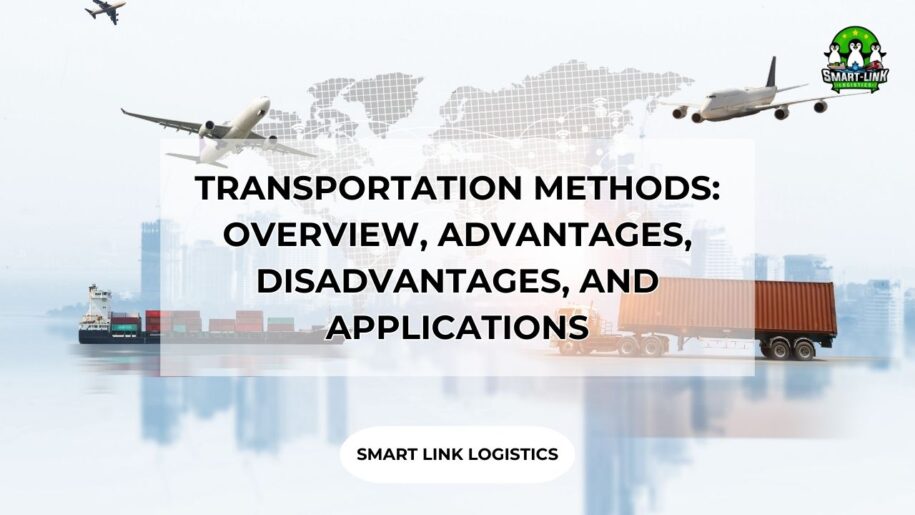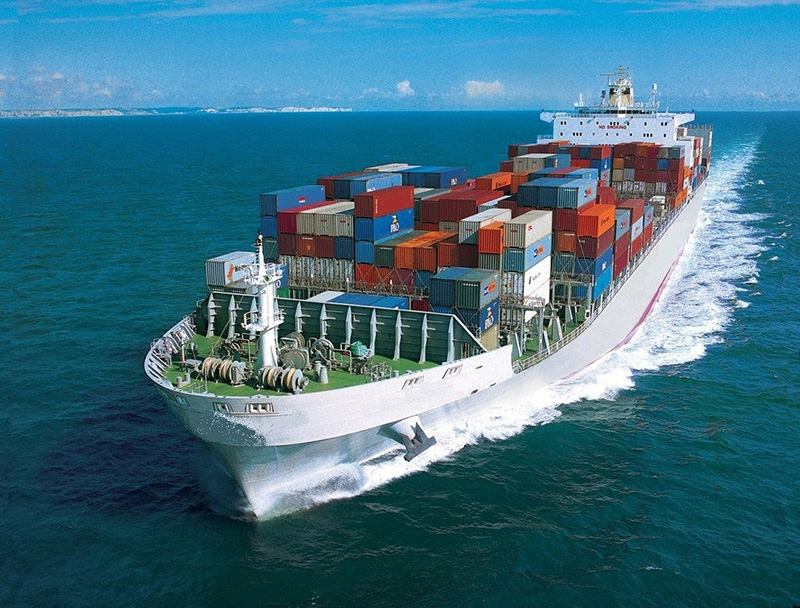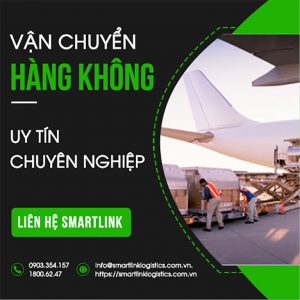
TRANSPORTATION METHODS: OVERVIEW, ADVANTAGES, DISADVANTAGES, AND APPLICATIONS
In the field of logistics and freight transportation, choosing the appropriate transportation method plays a crucial role in optimizing costs, time, and ensuring the safety of goods. Common transportation methods include road, rail, sea, air, and pipeline transport. This article provides an overview of these methods, highlighting their respective advantages, disadvantages, and practical applications.
1. Road Transport in Transportation Methods
Overview
Road transport involves the use of vehicles such as trucks, containers, and small delivery vans to move goods via road networks. It is the most commonly used form of transport for domestic shipments.
Advantages
- Flexibility: Road transport can access a wide range of locations, including remote areas that may be difficult to reach via other methods.
- Fast delivery times: For short to medium distances, road transport generally offers quicker delivery than other methods.
- Lower cost for short distances: For short-haul deliveries, road transport is often more cost-effective compared to rail or sea transport.
Disadvantages
- High costs for long distances: Road transport becomes expensive when the distance increases.
- Limited load capacity: Road vehicles have restrictions on load capacity, making them less suitable for transporting large quantities of goods.
- Affected by weather and traffic conditions: Delivery times may be impacted by poor weather or traffic congestion.
Applications
- Domestic goods transportation.
- Door-to-door delivery.
- Suitable for goods with moderate weight and size.
2. Rail Transport
Overview
Rail transport uses trains to move goods along rail networks. It is an efficient method for large shipments over long distances.
Advantages
- High transport capacity: Rail transport is capable of handling large and bulky shipments.
- Lower costs for long distances: Rail transport is generally more cost-effective than road transport for long-distance shipping.
- Stable and less affected by weather: Rail schedules are more reliable and less impacted by weather conditions.
Disadvantages
- Limited access to delivery locations: Rail transport is restricted to locations with rail networks, unlike road transport, which offers door-to-door service.
- Longer delivery times: Delivery times can be slower compared to road and air transport, especially when there are interchanges between rail networks.
Applications
- Transporting goods between major cities or industrial zones.
- Moving large shipments that do not require fast delivery.
- Long-distance shipping.
3. Sea Transport
Overview
Sea transport utilizes ships to move goods via international or domestic sea routes. It is the primary method for transporting export and import goods.

Advantages
- Low cost: Sea transport is typically the least expensive method for shipping large quantities of goods over long distances.
- High capacity: Ships can carry vast amounts of cargo, including both containerized and bulk goods.
- Suitable for non-time-sensitive goods: Sea transport is ideal for goods that do not require quick delivery.
Disadvantages
- Long delivery times: Sea transport takes longer than other methods, especially air transport.
- Affected by weather: Shipping schedules can be impacted by storms or rough seas.
- Limited to port-to-port delivery: Sea transport only facilitates delivery between seaports, not to the final destination.
Applications
- Import/export shipping.
- Transporting large quantities of goods that do not require fast delivery.
- Shipping containers and bulk cargo.
4. Air Transport
Overview
Air transport uses airplanes to move goods through international or domestic air routes. It is the fastest transportation method available.
Advantages
- Fast delivery: Air transport offers the quickest delivery times among all transportation methods.
- Suitable for high-value goods: Ideal for shipping goods of high value that require fast delivery.
- Less affected by terrain and weather: While occasionally impacted by severe weather, air transport is less influenced by geographical constraints compared to other methods.
Disadvantages
- High cost: Air transport is the most expensive option and is not suitable for large shipments.
- Limited load capacity and size: Airplanes have strict limitations on the weight and size of the cargo they can carry.
Applications
- Transporting high-value goods requiring fast delivery.
- International shipping.
- Shipping time-sensitive items such as perishable food or pharmaceuticals.
5. Pipeline Transport
Overview
Pipeline transport involves using pipeline systems to move liquids or gases such as oil, natural gas, and water.
Advantages
- Economically efficient: Pipeline transport is a cost-effective and efficient method for transporting liquids or gases over long distances.
- Safe and stable: Pipeline systems are less affected by weather or external factors, ensuring safe and stable transport.
- Continuous operation: Pipeline transport can operate continuously, unlike other transportation methods.
Disadvantages
- High initial investment: Constructing a pipeline network requires significant initial investment and long construction time.
- Limited to specific goods: Pipeline transport is only suitable for certain types of liquids or gases and cannot transport solid goods.
Applications
- Transporting oil and gas from extraction sites to processing plants.
- Water transportation in urban water supply systems.
- Moving liquid chemicals in industrial applications.
Conclusion
Choosing the right transportation methods depends on various factors such as the type of goods, transportation distance, costs, time, and delivery conditions. Understanding the advantages, disadvantages, and practical applications of each transportation method will help businesses optimize their logistics processes and achieve greater economic efficiency.
Hotline: + 84 935 766 039 to know more about our services

If you require assistance with international import and export of goods, please contact our team at Smartlink Logistics. We are available to provide you with professional guidance on our services and the necessary customs procedures.
SMART LINK: BEST SERVICE BEST YOU


































